Periodically, the signalling and telecommunication profession demonstrates and shares its technology and innovations, safety policy, business methods and finances as seen by rail infrastructure organisations, train companies and the supplier base.
Most recently, this was achieved through a five-day convention in Glasgow, organised by the IRSE. The subject matter had a Scottish flavour but the success stories and lessons to be learned had relevance for all the UK railways and many overseas railways as well. With attendees from right across the world, it was remarkable to hear during the socialising sessions, just how many of the problems being experienced in Britain were the same elsewhere. With a mixture of talks and technical visits, real progress was evident in some areas, though deployment of the game-changing technology that could yield substantial commercial benefits continues to struggle.
Current signalling technology
British Rail led the way back in the 1980s in the development of computer-based signalling commonly known as Solid State Interlockings (SSI). This took many years of tripartite co-operation between British Rail, Westinghouse (now part of Siemens Mobility), and GEC (now part of Alstom) to get an acceptable product standardised and approved for general use. The computer technology has moved on from those early days and improved versions of the interlocking have evolved into WestLock from Siemens and SmartLock from Alstom. Both have much greater computing power but retain the same data formats. Being bespoke products, they are expensive and increasingly only used where much of the associated trackside equipment is to be retained.
Ben Hugh from Siemens Mobility described an alternative approach that provides a complete solution for all the required signalling intelligence including the interlocking. Known as the Westrace Trackside System (WTS), this may be regarded as a ‘toolbox’ of Westrace units. The interlocking element is designed as ladder logic and was first used on some metro line projects including the London Underground Central Line upgrade. Westrace uses standardised templates which leads to faster designs with pre-wired components, this allows factory testing such that when the system leaves the test yard, it is known to work.
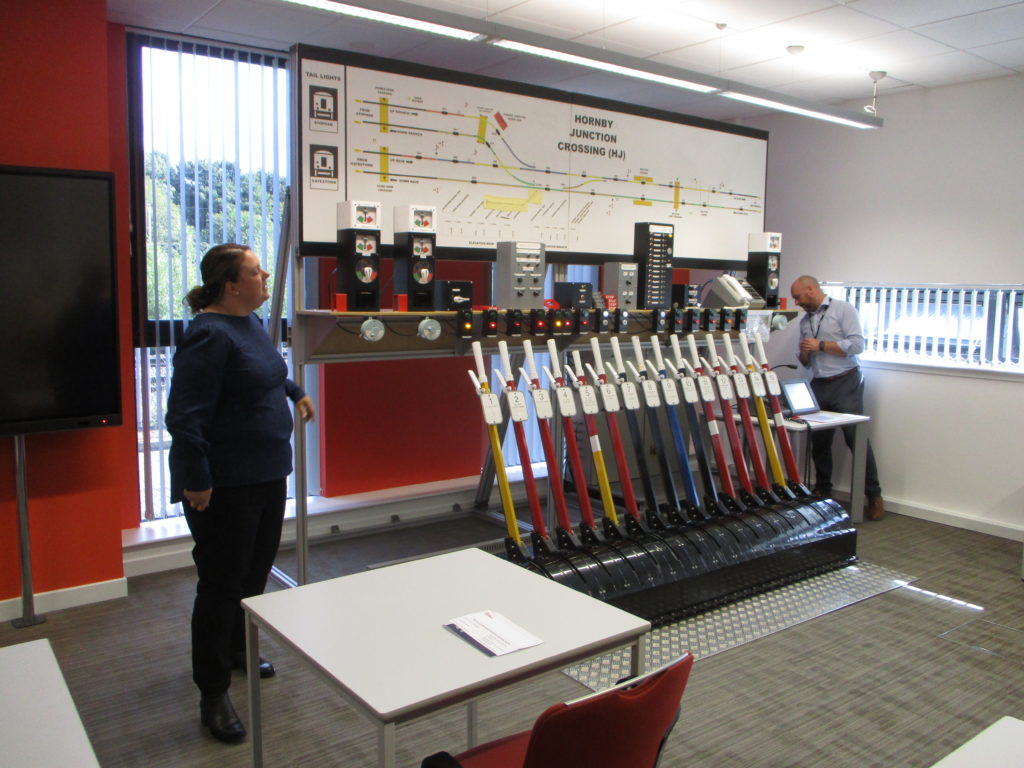
Another objective is to cram as much equipment into the lineside equipment room, itself being designed with a modular layout. This results in fewer lineside cases and thus fewer maintenance visits. External elements such as points and signals are connected by plug-coupled tail cables, measured beforehand to be the correct length. Each Westrace unit is a standard module design (e.g., a point module, a signal module, etc.) such that multiple connections can be made into one unit. Thus, a point module might be capable of serving, say, four point machines. If only one point machine is served, it might seem that the unit has more capacity than needed but the fact that it is standardised means that overall cost saving is achieved.
Westrace is designed to provide better remote condition monitoring including earth leakage detection with connection to third-party non-SIL equipment. Future developments include the use of cloud diagnostics and the use of alternative transmission links to replace customised cables. These might include low-powered radio and existing lineside comms. The WTS installed base is impressive and includes London Bridge, Derby, Liverpool Lime Street, Kings Cross, and, most recently, Macclesfield.
Lower cost signalling
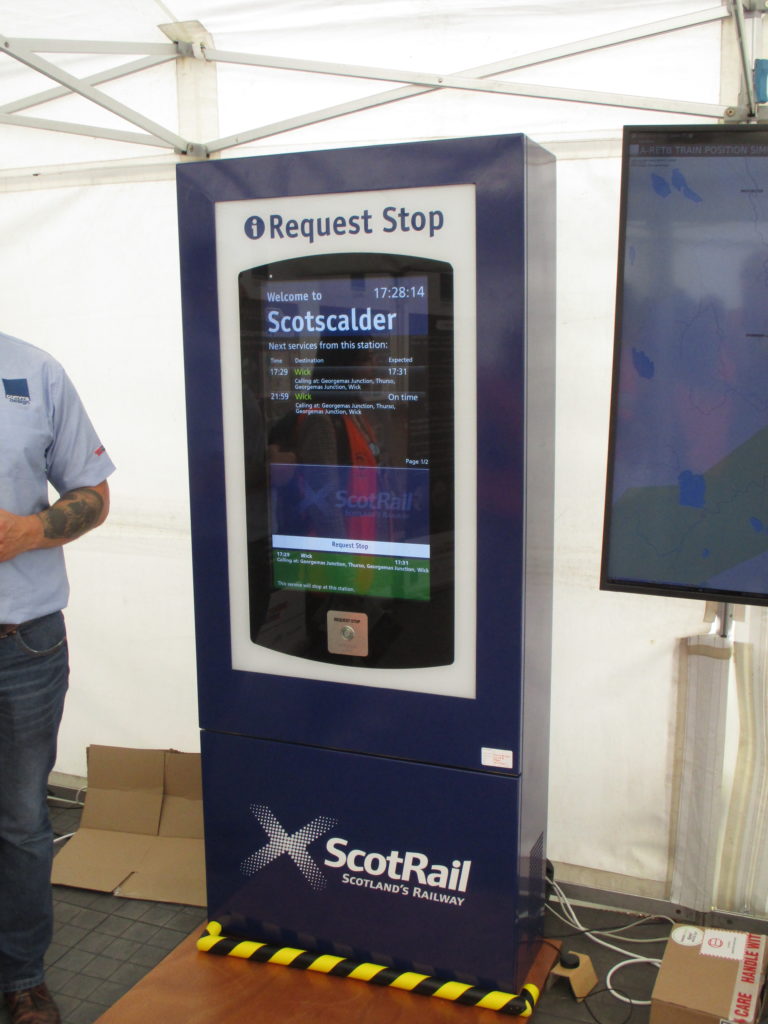
The cost of signalling is a contentious issue and several initiatives have occurred recently to provide more cost-effective technology, especially for rural lines. Park Signalling made much of its replacement design for a lookalike single line token instrument. Known as DiBloc, this is a digital block controller that connects to other instruments using secure IP Communication. A full description of the system was given in Rail Engineer Issue 174 (May 2019) so will not be repeated here. The first application has been on the Romney Hythe and Dymchurch narrow gauge railway in Kent and a contract is let for the Whitland to Tenby line in West Wales. There are still a few single lines that are operated by token machines so, although the market is not huge, it is significant and may have opportunities for overseas railways.
Radio Electronic Token Block (RETB) has been around for over 30 years but recent work to improve performance, partly necessitated by a radio frequency change, has made the system more reliable with more features. Under a main contract with Telent to provide overall delivery, both the West Highland Line and the Far North lines in Scotland have benefited from the upgraded system. Whilst the basic principles of a chain of radio links from the control centres at Bannervie and Inverness remain, the radio network has been completely renewed with equipment being designed and supplied by Comms Design Ltd, a Harrogate company specialising in bespoke radio equipment.
These lines are in remote areas and very often there are no passengers to join a train at the stations. To avoid the driver having to slow down in case a passenger is waiting, Request Stop units have been developed by Park Signalling linked into the RETB network. On the platform, a unit is provided that gives the time of the next train services, usually in both directions. A button is then pushed to request the train to stop, with this then being posted on to the driver’s RETB token screen. Currently being trialled at Scotscalder, it is expected that these units will be rolled out to all stations on these lines.
A limitation of RETB operation is the hydraulically controlled loop points (effectively spring points) that can be trailed through in the wrong direction, necessitating a severe speed restriction. Park Signalling is investigating the motorising of points and control of their movement by RETB commands. This would improve the speed profile and enable valuable time savings to be made, particularly if a train does not have to stop at the loop location. It would however require a power source to be provided, not always easy in very remote places. Another future initiative is to use GPS positioning information which trains are increasingly equipped with, to link into the RETB network and provide the signallers with accurate and continual train location data. Watch this space to see how these developments turn out.
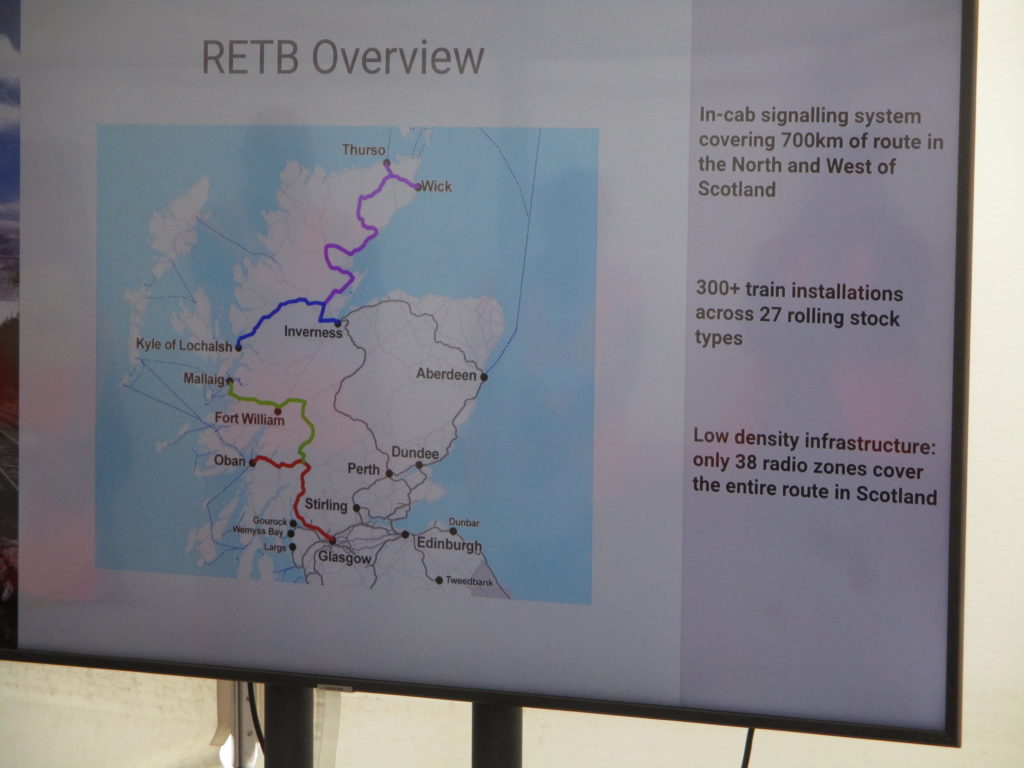
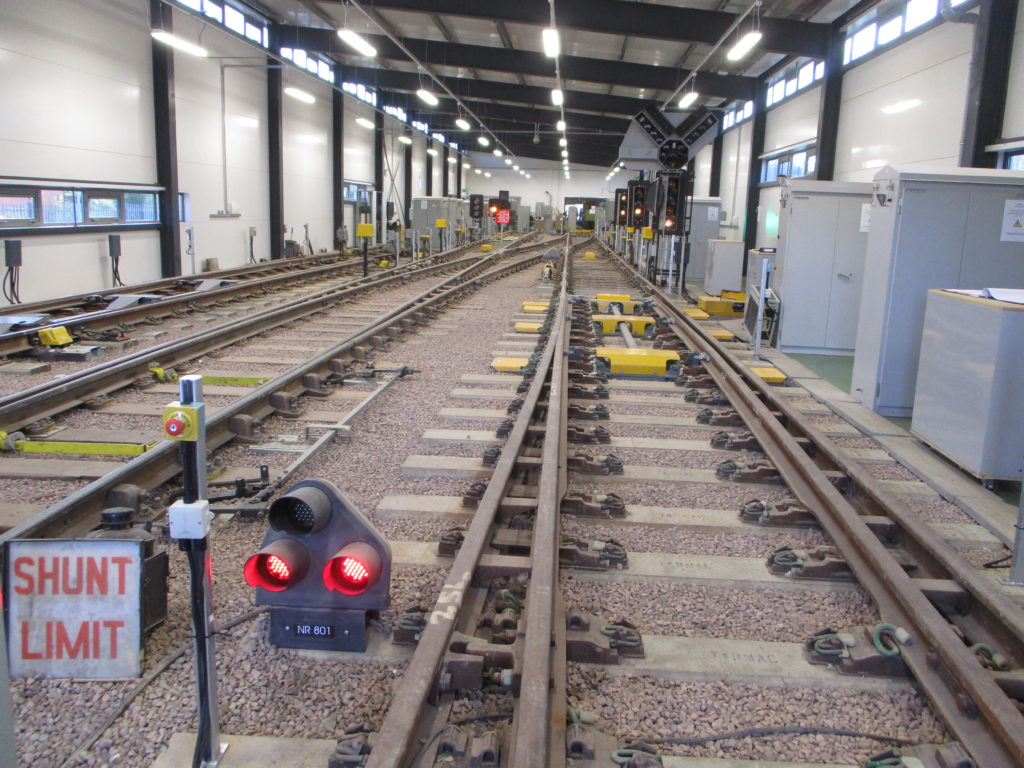
Asset management
Keeping signalling in reliable and safe condition is always an important responsibility, however the processes for assessing when and how to renew assets must consider many factors. Lynsey Hunter, the Regional Asset Manager for signalling in Scotland, explained some of the challenges. Signalling equipment has an average life span of 30 years, meaning regular maintenance until when it is not possible (often because of obsolescence issues) whence renewal is required. The spend profile for different assets, if renewed piecemeal, means spending more than if you renew a complete system in one go. Other influences may prevail:
- Passengers want enhancements which signalling can help provide.
- The regulator will hold you to the promises you made.
- Train operators expect the infrastructure owner to pay.
- Other assets, such as stations, may influence the future signalling system.
- The funder wants value for money.
Signalling costs do not vary that much if the line has eight trains a day or eight trains an hour, but enhancements such as a loop extension create questions around who pays for what. Modification or updating an asset is not always acceptable. Dressing up a donkey still leaves you with a donkey! Stakeholders need both a perception of the risk and the willingness to take risk. The supply chain needs regular orders to keep them in business.
Decarbonisation and technology
Decarbonisation, buzz word of the moment, is often seen as having little relevance for signalling, however there are areas where carbon reduction can be influenced by some of the more recent technologies. Stephen Wright from Siemens Mobility went through some of the systems that can help. ETCS, TMS, and C-DAS can all contribute to improving train performance and thus to energy reduction. Fine in theory, but these systems have been available for many years. Whilst some are being introduced in dribs and drabs, deployment in the quantities originally intended has never happened. When questioned, the general opinion is that upfront investment in such systems fails to take a long-term view of the benefits that are realisable and thus the money is not forthcoming.
One can only hope that this situation improves as countries are setting challenging targets for carbon reduction, Scotland wants all passenger services to be decarbonised by 2035 but TMS and ETCS seems as far away as ever.

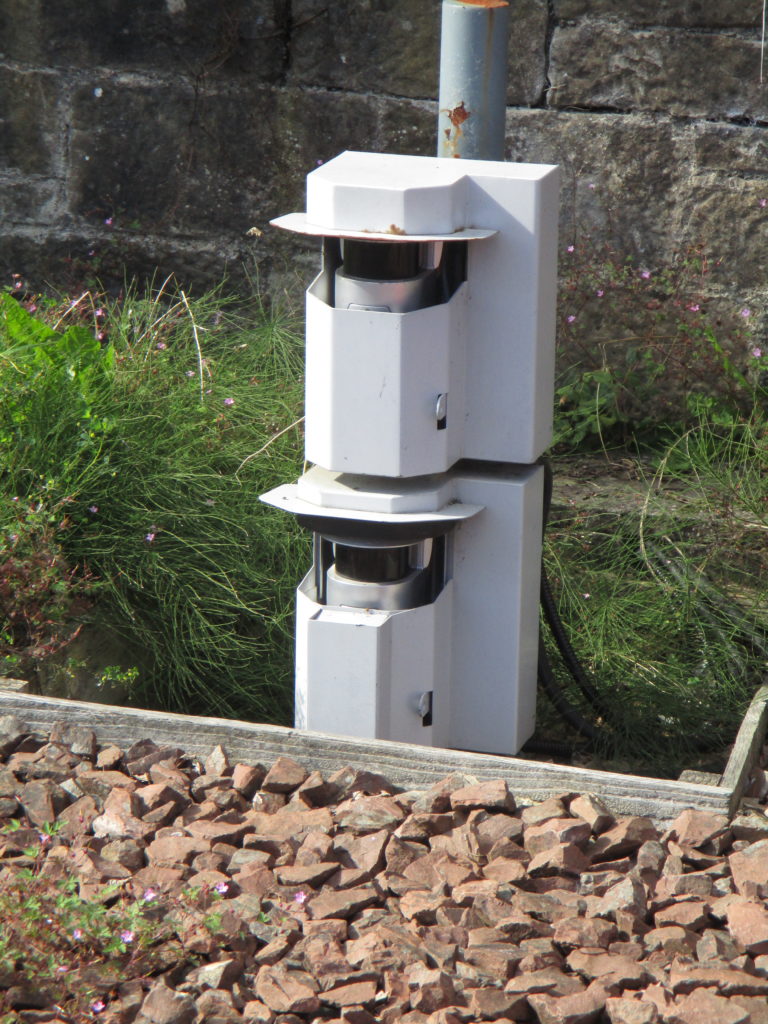
Staff training
The shortage of competent engineers and technicians is well documented, so training new recruits to the profession is vital. Scotland has a dedicated training centre at Larbert which covers all aspects of signalling systems, from traditional lever frames to ETCS, with a full range of rail and trackside equipment housed in a simulated railway hall as well as outside. Point operating mechanisms abound, both electrical machines and clamp locks.
Two elements of training were given specific focus to the visiting members:
Level crossing modernisation is prominent with obstacle detection crossings and the supporting radar and lidar equipment needing to be fully understood. It is often thought that OD (obstacle detection) crossings are there to upgrade a crossing from AHB (Automatic Half Barrier) but this is not the case. With the concentration of signalling into ever more centralised centres, full four-barrier CCTV controlled crossings could well overwhelm the capability of a single signaller. Thus, OD crossings are primarily there to remove the responsibility of the signaller to prove the crossing clear, with the additional benefit of automating the crossing in the process. A full understanding of these crossings is needed, particularly the sequencing of operation during the barrier lowering and detection processes.
TCOD (Track Circuit Operating Device) is an important element in improving staff protection when needing to work on running lines. Placing such devices and managing their presence can be a challenge for local staff. An improved version which includes its GPS positioning and is capable of interrogation has now been developed. Whilst still portable, the TCOD is sprung into position at the desired location and activated by a single person at the site. With a unique serial number and its GPS position shown by a seven-digit numeric code, the battery powered GPS and mobile radio is placed nearby in a secure box.

When needed, the site supervisor consults with the signaller and, once satisfied, the TCOD is then activated. In busy areas where track maintenance is undertaken frequently, the TCOD can be left in position permanently, the battery life being several months. It can be interrogated and activated remotely, thus saving the need to walk out and put a TCOD in position. This is a fully approved product with around 400 already in use.
Satellite communication
Satellites have the advantage of being able to provide communication in even the remotest of areas. Scotland has many such locations and at some places where level crossings exist, providing a telephone service to the public can be a challenge. A trackside SatPhone has therefore been developed by Iridium for which Dr. Bob Gardner from Network Rail gave details. Power is provided either by solar panels or a local wind generator. Use is made of low-orbit satellites, so guaranteed connection to at least one of them is assured.
Monitoring for flooding and bridge scour was featured in Rail Engineer issue 197 (July/August 2022), whereby the transmission of alarm data also uses a satellite connection to Iridium’s control centre in the US, and then to a customer’s operations centre by a virtual private network (VPN).
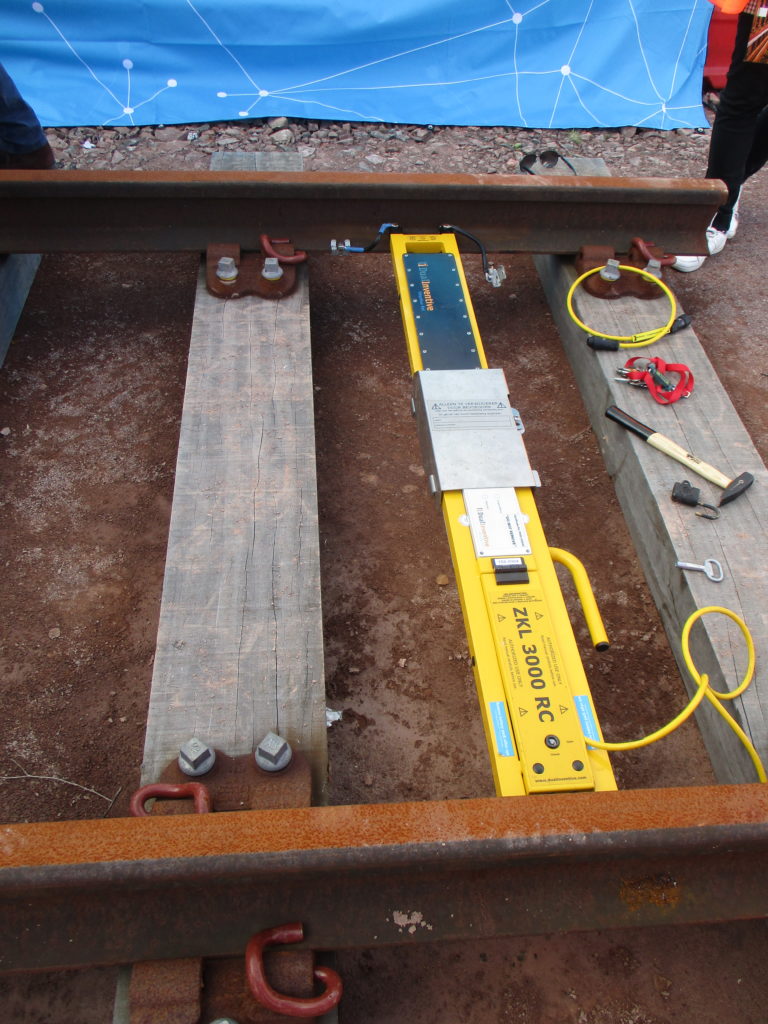
Delivering broadband to trains is an ever-demanded request from the travelling public and Network Rail is investigating a satellite derived service for the East Coast Main Line. An IC225 was fitted out with a Starlink terminal but, for some reason, this was never used. A new initiative is underway on the same train with the intention of providing a 500Mbits/sec connection. Tests are taking place over a 200-mile stretch of the route and, so far, have achieved 190Mb/s in the download direction and 17Mb/s for the upload. Work is ongoing. Inevitably, where tunnels exist, the connection will be lost but, with higher speed trains, maybe a holding facility can be used to automatically re-connect once daylight is reached again. Using satellite connections does invoke a financial charge reckoned to be between £80 and £400 per month, dependent on the capacity required.
The Carstairs remodelling
One of the biggest projects in Scotland is remodelling the triangular junction at Carstairs, the place where the West Coast Main Line from London splits for Glasgow or Edinburgh, as well as providing another Glasgow to Edinburgh route. It is also the place where the overnight sleeper service to and from London splits into two portions. The present layout is complex with significant speed restrictions imposed. Around 200 trains pass through on a daily basis.
The remodelling will segregate the fast lines from the station platform lines to give much improved line speeds of 100mph to Glasgow and 40mph to Edinburgh. Thirty-five point ends will be reduced to 28 and a complete resignalling is necessary with flashing 5th aspects being deployed. The revised track layout demands new portal overhead line gantries to be provided for the OLE. The total cost is £160 million, so this is a major project.

The work will be carefully staged to minimise disruption with most of the rudimentary work having been completed, however a 16 day closure will take place in early 2023 requiring London-Glasgow trains to be diverted via Kilmarnock.
West of Scotland Signalling Centre
A visit to this centre proved revealing. The signalling area covered is continually being expanded and already has taken over the routes covered by the now closed Glasgow Central and Motherwell power boxes of 1970s vintage. The route from Paisley to Ayr is included and further routes towards Kilmarnock will eventually be added.
Gone are the days of large mimic panels and all train movements are viewed on computer screens, some of which are quite large. Around 10 workstations exist, tailored to specific areas. Train movements are generally set automatically from the timetable database using the automatic route setting facility but the signallers choose to do manual route setting from time-to-time so as to remain competent. The interlockings are Westlock but as the signalling centre has grown, more modern variations of the product have been used. A new Westlock will be provided for the remodelled Carstairs area.
From a telecoms perspective, it was interesting to talk to the signallers. Communication with drivers is invariably by the GSM-R radio network. Just occasionally, a call may be picked up by a ‘wrong’ base station and sent to the wrong signaller. Local procedures deal with transferring the call to the ‘right’ signaller. The only users of SPTs are track staff and even this is rare. As one who has campaigned for years to have SPTs removed, it would seem that Network Rail should bite the bullet and take the decision not to provide these in future. New SPT systems are increasingly expensive to construct (sometimes over £1 million for a big centre) when budgets are constrained.
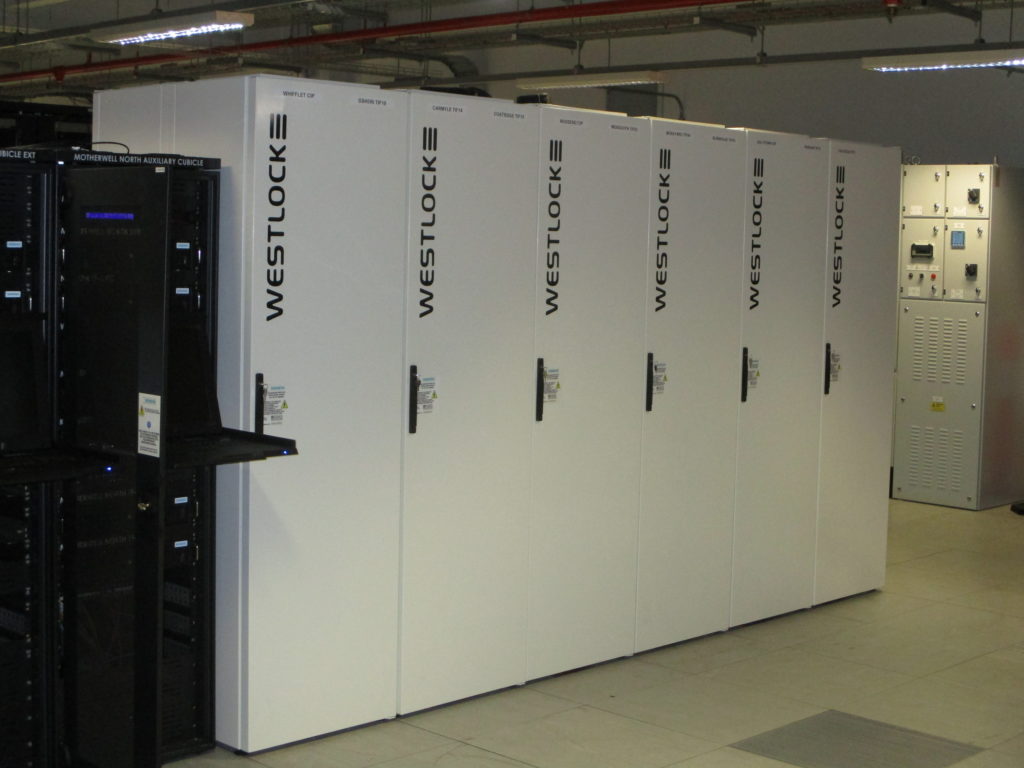
Final thoughts
Scotland has an enviable reputation for being proactive in expanding its rail network. Several lines have re-opened in recent years with the latest – to Levenmouth – expected to open in 2024. All of these have employed traditional signalling and there is little evidence that the adoption of ETCS will feature in future proposals. The use of RETB is commended but whether this will ever be expanded to other lines is debatable. Some deployment of C-DAS is beginning to happen but no plans for Traffic Management Systems were evident.
The adoption of the latest technologies to yield undoubted benefits for capacity improvement and decarbonisation seems only to be happening piecemeal throughout the UK. Maybe the future Great British Railways and government thinking might be persuaded to take a new look at this.


